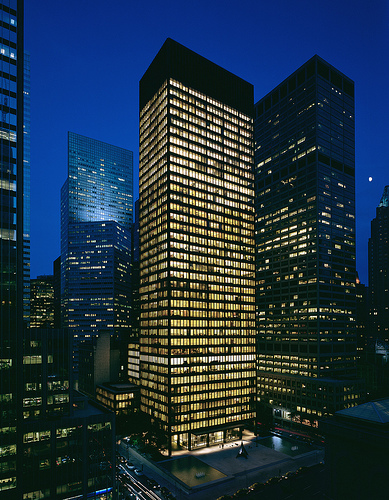Reuters drops some nuggets of gold in this article but for the sake of brevity, and my 9am deadline, I'm going to paste the relevant pieces. This is in regards to last week's post on CGCMT 2013-375P.
The Pricing
- While this type of rating agency sniping has been going on over the past two years...it has never been timed in this way, according to industry participants.
- "The underwriters clearly emptied the old bag of tricks on this one, as far as crisis-era underwriting goes, and the agencies [fell for] them," said the head of CMBS investing at one of the biggest asset managers in the country.
- Those tricks included re-measuring the building, lowering management fees in order to minimize projected expenses, and creating an 'optimizing' structure that pushes as much away from the mezzanine debt into the securitization at the Triple B minus level.
- ...the Triple A portion of the US$572.9m transaction was increased at pricing on Thursday from US$75m to US$209m. Spreads on the most subordinate pieces widened considerably, however. The deal was originally US$439.75m.
The Structure
- The underwriters securitized the entirety of the so-called subordinate, or junior, portion of a US$782.75m commercial mortgage on the Seagram building.
- However, they only securitized part of the senior portion, known as the A loan, leaving the flexibility to increase the Triple A piece in the bond transaction.
- he remaining unsecuritized portion of the A loan will be put into an upcoming multi-borrower CMBS conduit.
The Assumptions
- ...they generally thought that the issuer's initial projected numbers regarding net operating income, occupancy, expenses, structure, and other metrics on the top-notch building were way too aggressive.
- Therefore, each agency assumed a steep haircut on the building's net cashflow and valuation in order to arrive at its Triple A enhancement levels.
- Kroll assumed 17.9% less than the issuer's net cashflow and 46.7% below the appraiser's valuation...
- Moody's undercut by 10.7% the underwritten cashflow.
- In January, Fitch rated a CMBS titled GSMS 2013-KYO, linked to six hotels in Honolulu, which was said to have used pro forma underwriting;
- In response, the head of CMBS at Fitch, Huxley Somerville, said that Fitch used a highly stressed cashflow assumption on the deal backed by the Kyo-Ya hotel portfolio
- The underwriter, Goldman Sachs, used pro forma assumptions to calculate so-called Revenue Per Available Room (RevPAR), presenting a projected cashflow of US$174.4m.
- ..last November Fitch gave Triple A grades to a deal linked to an office building, 1290 Ave of the Americas, with pro forma projections.
- Similarly, on the deal backed by a loan on 1290 Ave. of the Americas in Manhattan, Somerville said there was a US$10m leasing reserve to cover future leasing costs
- the underwriter's cashflow was US$94.4m, while Fitch assumed US$89.9m.
then I'll start to get worried.
~Jingle Male




3 comments:
If anyone should refrain from being holier than thou, it should be Fitch. Even if the loan is pro forma, the borrower owns a number of other properties and can come out of pocket if they can't lease the building up. For once, I have to agree with Moodys and S&P.
You have to wonder when some dealer has enough and challenges the whole "we have journalist protections" thing and sues them over tortious interference for causing the pricing to get blown up. Maybe they don't win, but it would be fun to watch.
Wouldn't ever happen; the banks need the ratings agencies otherwise non-agency structured finance dies out. So they may not go to Fitch with a pro-forma office loan, but they may go to Fitch with the second-tier strip mall loans which Moodys doesn't like.
Post a Comment